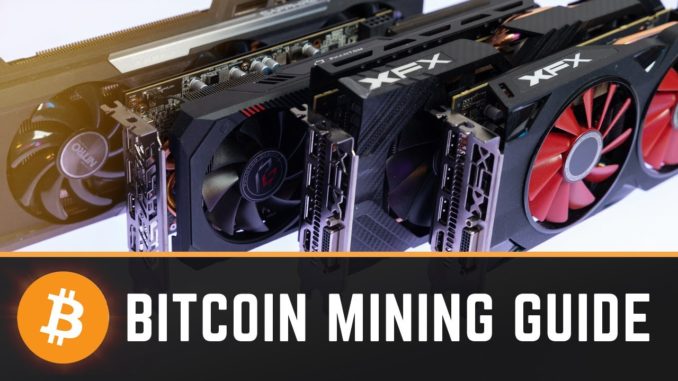The London hard fork of Ethereum, which went live on Aug. 5, ushered in a new era for the transition to Ethereum 2.0, a complete proof-of-stake (PoS) blockchain. In fact, the London upgrade is the penultimate step on the way to the final transition to PoS scheduled sometime in 2022. The upgrade got triggered almost on time at 12:33 pm UTC at the block height of 12,965,000.
Along with the highly anticipated Ethereum Improvement Proposal (EIP) 1559, this upgrade brings four other EIPs to the network, EIP-3554, EIP-3541, EIP-3198 and EIP-3529. The main change that EIP-1559 brought is the management of transaction fees on the blockchain. In the previous pricing mechanism, the transaction fees would go to the miner directly, but now, there is a fixed-per-block network fee that is burned. This eventually means a lower revenue from transaction fees for miners.
A representative from ConsenSys, a blockchain technology company backing Ethereum’s infrastructure, told Cointelegraph about the enthusiasm of network users when compared to the initial discontent of the miners:
“Users seem much more supportive of the hard fork because this provides them with more predictable gas fees. As of today, 97,5% of clients are ready for the London hard fork. This is why EIP-1559 became mainstream among the community and is the most important proposal approved by the Ethereum community included in the London Hard Fork.”
However, miners still have an additional stream of revenue over the two Ether (ETH) reward that they receive for every newly minted block. The EIP-1559 also adds the concept of a “tip” to the transaction pricing mechanism. The tip can be seen as a priority fee so that applications and users can choose to pay if they want their transaction to be prioritized by the network.
Kent Barton, head of research and development of ShapeShift, a cryptocurrency trading platform, discussed the impact of EIP-1559 on the dynamics of the community with Cointelegraph, stating: “The reduced miner profitability of 1559 led to some initial opposition from that part of the Ethereum ecosystem. However, there was no realistic alternative, 1559 had wide support from the rest of the community.”
MEV to gain more prominence before the merge
Barton believes that the miners decided to abandon their opposing stance, as a contentious hard fork, in addition to being unpopular, would also trigger a pullback for the price of ETH, ultimately going against their own interests. In response to the reduction in direct revenue miners earn, several mining pools have begun to resort to Miner Extractable Value (MEV) solutions to push their net revenues.
MEV is a metric that measures the profit that a miner, validator, or sequencer can earn, using their ability to benefit from arbitrage by including, excluding, or reordering transactions within mining blocks that are produced. MEV solutions can only be triggered and executed by miners as only they have the power to organize transactions within a block on the network.
Caleb Sheridan, a core developer at the Eden Network, a priority transaction network, spoke with Cointelegraph about MEV, saying, “MEV (Miner Extractable Value) is more important than ever. Miners are finding novel ways to augment their revenue after the reduction faced in EIP-1559. These techniques and tools will find their way to proof-of-stake, where validators will also use them to augment their revenue.”
Sheridan further mentioned that MEV solutions offer onboarded miners increased rewards for “honest participation in the ordering protocol proposed by the network.” This would also keep these solutions relevant for validators after the completion of the PoS transition.
However, it’s important to remember that one of the main aims of the London upgrade through EIP-1559 was to curb the issue of high gas fees that had plagued the network all throughout the bull run from late Q4 2020 to halfway through Q2 2021. Since the London upgrade was triggered on Aug. 5, the gas fees have also shown a spike.
The gas prices have risen 44% from the pre-upgrade levels of 45.77 Gwei on Aug. 4 to a 45 day high of 65.22 Gwei on Aug. 10. Gwei is a quantity used to calculate gas fees. Gwei or a Gigawei is a small unit of Ether, known as the smallest base unit of the token. One gwei is equal to 0.000000001 ETH, or the other way around, 1 ETH is equivalent to 1 billion gwei.
However, this spike in gas fees could just be a function of increased network congestion that the price action of the asset and the upgrade itself attracted. It’s noteworthy that this spike in gas fees is still a lot lower than the gas fees the network charged back in May, the last time ETH traded at its current price range.
These increased gas fees are now burned instead of going to the miners, thus leading to the destruction of some Ether tokens from the network’s economy. This burning impact of the EIP-1559 adds deflationary pressure on the token. The representative of ConsenSys discussed this further, saying:
“Investor sentiment toward ETH as an asset seems to be reacting to the diminishing supply of ETH due to EIP-1559. Already, 23k ETH has been burned, which is slowing the emission rate of new ETH (which is paid in the form of block rewards for new blocks added to the chain).”
At the current rate of burn, 2.3 ETH is destroyed every minute. This means that at the current market value of the token, $10.7 million worth of ETH tokens are burned every day. However, this rate of burn has given way to the “deflationary asset” narrative for Ethereum’s native token. But in reality, this upgrade doesn’t really make Ether a deflationary asset, it just reduces the rate it’s currently inflating at. In fact, Ether will remain inflationary even when the transition to Ethereum 2.0 is complete.
A model made by Justin Drake of the Ethereum Foundation reveals that as a “best guess,” there will be 1,000 ETH issued per day and 6,000 ETH burned in the same period. His model assumes that if more validators join and the staking annual percentage returns (APR)/yield is 6%, the annual decrease in supply will be 1.6 million Ether tokens and hence, reducing the annual supply rate for the asset to 1.4%. This model confirms that the token would still be an inflationary asset, just one with higher deflationary pressure on it.
ETH gains surpass BTC among other metrics
This hard fork for Ethereum has led to enormous gains for its native token. ETH has fluctuated over the $3,000, around 30% off the all-time high of $4,362 it reached on May 12, 2021. The token is trading at levels it was trading in May, before the flash crash of the majority of the crypto market on May 19 — a day that is now known as “Black Wednesday.”
Although Bitcoin (BTC) has also posted impressive gains in the past seven days, Ethereum has outperformed the premier cryptocurrency yet again. The seven-day gains for ETH are at 29.62% as compared to the 21.69% in Bitcoin’s price. Even though the London upgrade is an important step in the Ethereum roadmap, the movement it represents is way larger. It is the impact of institutional investors, nonfungible tokens (NFTs), decentralized finance (DeFi) and the general public’s distrust of centralized finance (CeFi).
Armstrong opined further on this comparison saying that “The London upgrade was an important step in the Ethereum roadmap but its movement against Bitcoin is more than just London: It’s a network effect of institutional investors, NFTs, the DeFi summer and the general public’s distrust of CeFi.” Mike McGlone, a senior commodity strategist at Bloomberg Intelligence has even mentioned that Ethereum could lead the way to Bitcoin hitting $100,000.
Related: Bitcoin dominance on the rise once again as crypto market rallies
The next step for Ethereum would be the final merge to the proof-of-stake, which according to ConsenSys, is “likely to happen in early 2022.” The ConsenSys representative also revealed that some analysts are expecting that staking payouts will more than double to $20 billion soon and they will double again to hit $40 billion by 2025.
Whether these predictions come to fruition or not, it is evident from the market sentiment that despite the slump in the market between June and July, Ether is cementing its place further as the cryptocurrency with utility, especially with network upgrades like the London hard fork spurring its growth by addressing pre-existing pain points like gas fees.
The community is seemingly responding well to what ConsenSys founder and Ethereum co-founder Joseph Lubin has called the introduction of ultrasound money. Even Kevin O’Leary of Shark Tank fame has also further perpetuated the ultrasound money narrative, citing the lack of a supply floor as a reason.






